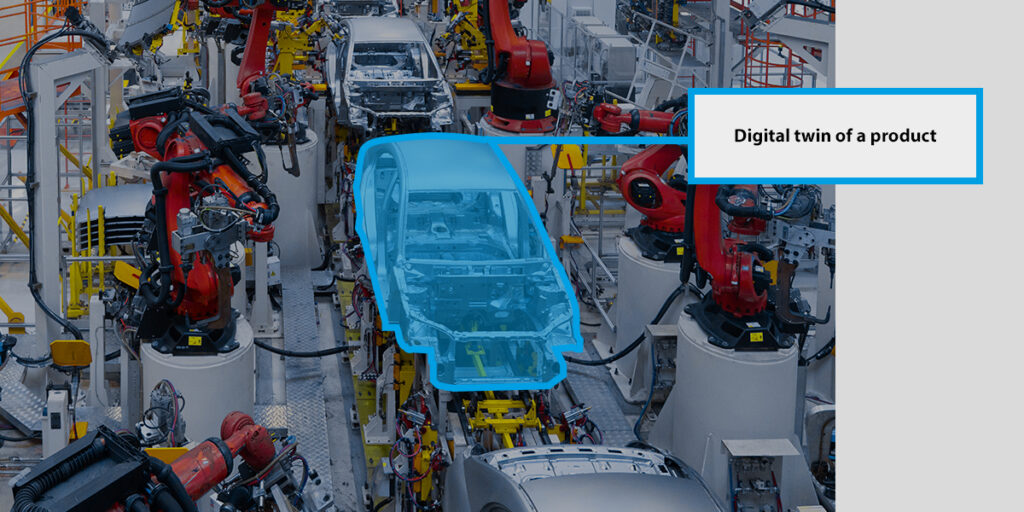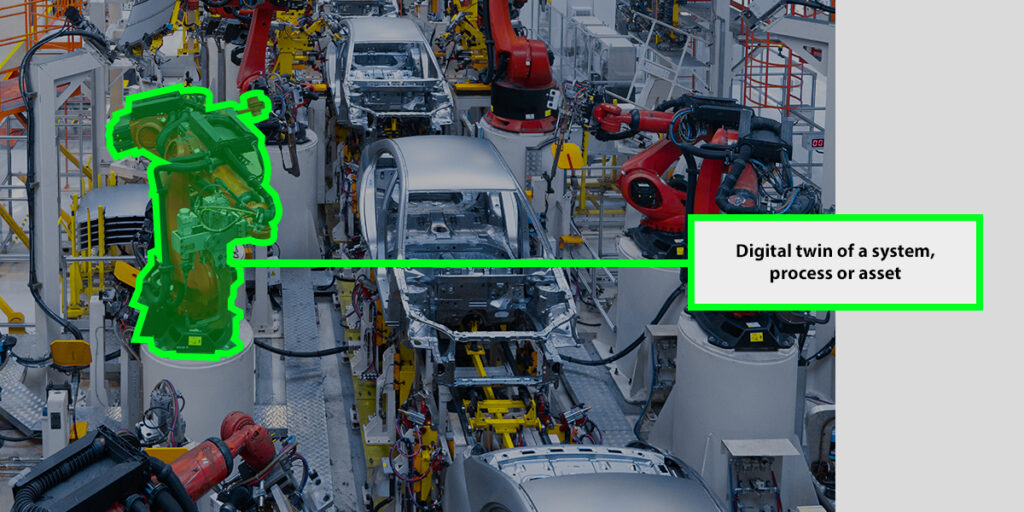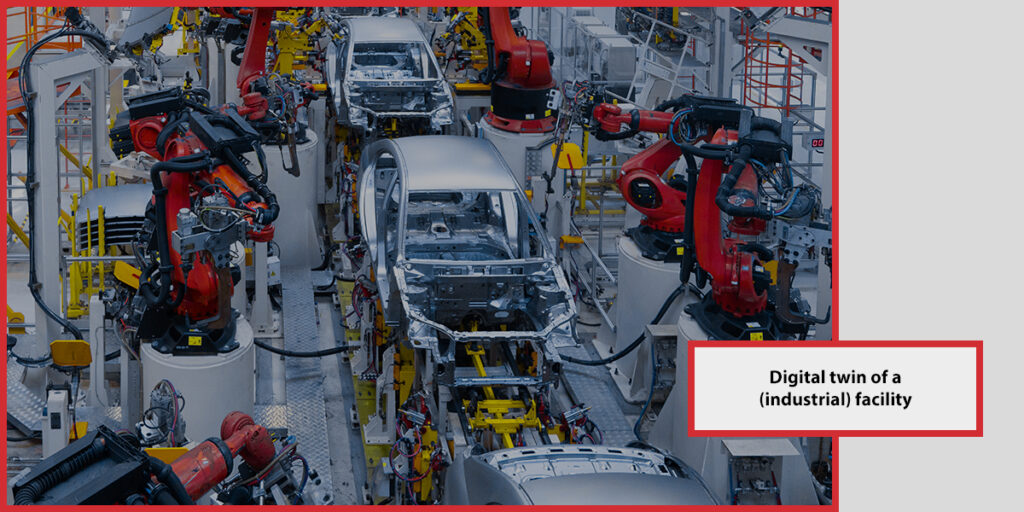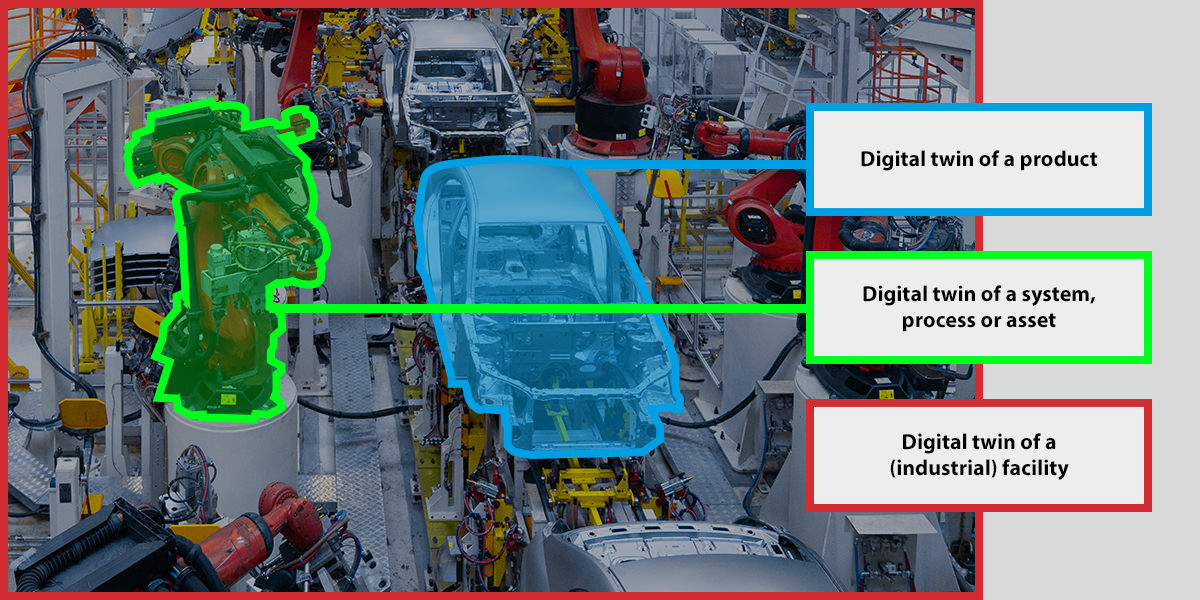Introduction
In the fast-paced world of manufacturing and industry, the concept of a digital twin has gained immense popularity. Digital twins are an exact virtual replica of a physical entity, be it a product, system, process, asset, or an entire industrial facility. Digital twin technology has revolutionized the industrial world by enabling manufacturers to simulate and analyze their products and processes before actual production.
With the plethora of digital twin options available today, it can be challenging to determine which type is right for your specific industrial needs. In this article, we will explore the different types of digital twins available and help you determine which digital twin is right for you. Let’s get started!
Digital Twin of a Product

A digital twin of a product is a virtual replica of a physical product. The foundation of such a digital twin is often a computer-aided design (CAD) model originating from the design processes and can help manufacturers to simulate and analyze the product design before physical production. This helps to identify potential design flaws, manufacturing errors, and other issues that could arise during production.
With a digital twin of your product, you can analyze the product’s performance, identify areas for improvement, and optimize the product design. You can also use the twin to predict maintenance needs and to develop a predictive maintenance plan to minimize downtime and maintenance costs.
If you are a product manufacturer, you should definitely think about getting a digital twin of your product. It will enable you to optimize your product design and manufacturing processes, saving you time and money in the long run.
Digital Twin of a System, Process or Asset

A digital twin of a system, process or asset is a virtual model of a physical system, asset or process. It can be a robotic arm, a steam turbine or a melting/casting process or anything else that is part of an industrial facility. It is created using advanced simulation software that can simulate the behavior of the physical system under different conditions.
The digital twin of a system enables manufacturers to analyze the system’s performance, identify potential issues, and optimize the system design. It can also be used to simulate and test different scenarios, helping manufacturers to make informed decisions about system upgrades or changes. Another important benefit of using a digital twin of a process, system or asset, is that you can streamline maintenance tasks based off predictions the digital twin makes about your assets regarding possible downtimes or inspection needs.
If you’re responsible for developing processes, implementing systems, or managing assets, a digital twin of these use cases is the right choice for you. With it, you will be able to optimize your system, process and asset design and improve their performance, ultimately reducing downtime and maintenance costs.
Digital Twin of an Entire Industrial Facility

A digital twin of an entire industrial facility is the digital counterpart of a facility in the real world. It is created using advanced AI-powered software that is based on photogrammetric methods to give you an exact true-to-life copy of your facility and everything that is in it.
But that’s not all: this type of digital twin doesn’t only allow you to view your surroundings as if you were physically there from the comfort of your desk, it also allows you to attach any kind of information about any asset, system, product or process to the asset in question within the twin. Thanks to sensors attached to the assets, information about production output, maintenance tasks or metered values are sent directly to the twin and displayed there in real time.
Because this type of twin is true to size, you can even plan modernizations in it. By adding a 3D model of the asset that you want to integrate into your facility into the digital twin, you can check for obstacles and space issues before actually ordering the asset.
Think of it like a personal Google Street View app of your factory on steroids.
If you are an industrial facility owner or operator, a digital twin of an entire facility is the right choice for you. It will enable you to optimize your facility design and improve facility performance, ultimately reducing downtime and maintenance costs.
Conclusion
In conclusion, choosing the right digital twin for your industrial needs is crucial for optimizing design and performance, reducing maintenance costs and downtime, and making informed decisions about upgrades or changes.
Whether you are a product manufacturer, systems, process, equipment engineer, machine manufacturer, or an industrial facility owner or operator, there is a digital twin that is right for you.
Interested in a digital twin that depicts your entire facility in a photorealistic way? Contact us today to learn more about our FRAMENCE twins and how they can help you plan modernizations, optimize your production output, minimize downtimes and much more! Our consultants are happy to answer any questions you might have free of charge at 0049 6251 584 0 or at info@framence.com.








